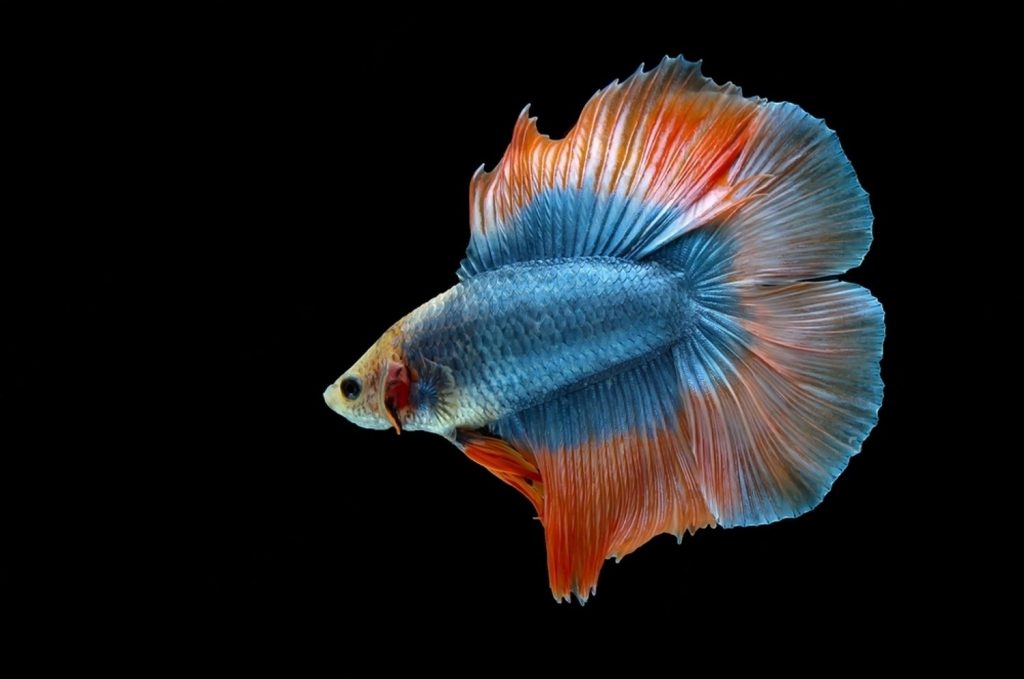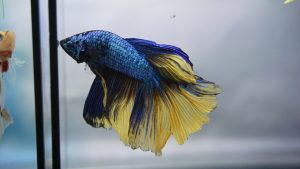The world of betta fish enthusiasts is filled with a wide array of captivating and exotic species, each possessing its own charm and allure. Among these fascinating fish, the double tail betta stands out with its distinct and eye-catching appearance. In this article, we will delve into the world of double tail bettas, exploring their characteristics, different types, rarity, colors, lifespan, and care requirements. So, let’s dive in and discover the captivating world of double-tail bettas.
Table of Contents
What is a Double Tail Betta?
A double tail betta, as the name suggests, possesses the striking feature of having two distinct tails instead of the usual single tail found in other betta fish varieties. This distinctive characteristic is what sets them apart and makes them highly sought after by fish enthusiasts around the world.
Characteristics of Double Tail Betta
Physical Appearance
The double tail betta showcases a mesmerizing and elongated body, with vibrant hues and striking patterns adorning its scales. Their bodies come in a wide range of colors, including shades of red, blue, yellow, and even metallic tones. Additionally, their fins exhibit remarkable variations, contributing to their overall appeal.
Tail Structure
Unlike their single-tailed counterparts, double-tail bettas possess two distinct tails that flow elegantly, creating a captivating display of movement and grace. The symmetrical division of the tail gives them a unique and eye-catching appearance, making them stand out among other betta varieties.
Different Types of Double Tail Betta
Double Tail Betta Male
One of the most popular types of double tail bettas is the male variant. These males exhibit vibrant colors and elaborate fins, making them a favorite choice for betta enthusiasts. Their long, flowing tails create a mesmerizing display, captivating anyone who lays eyes upon them.
Halfmoon Double Tail Betta
The Halfmoon double tail betta is renowned for its impressive tail spread, resembling the shape of a half-moon when fully flared. This variety showcases an even more pronounced and stunning display of finnage, adding a touch of elegance and grandeur to any aquarium.

Double Tail Betta Plakat
The double tail betta plakat, also known as the plakat or short-finned betta, possesses shorter fins compared to other double tail variants. While they may have reduced finnage, they compensate with their bold and robust appearance. These bettas often exhibit vibrant colors and a fierce demeanor, making them a popular choice among betta enthusiasts who appreciate their unique charm.
Uniqueness and Rarity of Double Tail Betta
Is Double Tail Betta Rare?
This betta is considered relatively rare in the betta fish world. While not as commonly found as the more traditional single-tail bettas, the double tail variety has gained significant popularity among breeders and hobbyists. Their unique appearance and captivating finnage contribute to their desirability and make them a sought-after addition to aquariums worldwide.
Color Variations in Double Tail Bettas
Double tail bettas come in a stunning array of colors, providing a wide range of options for fish keepers. From vibrant reds and blues to subtle pastels and metallic shades, the color variations in double tail bettas are truly remarkable. These captivating hues, combined with their distinct tail structure, create a visual spectacle that can enhance any aquarium.
Caring for Double Tail Betta
To ensure the health and well-being of your double tail betta, it’s crucial to provide them with proper care and a suitable environment. Here are some essential aspects to consider:
Tank Setup and Environment
Double tail bettas require expansive tanks that allow ample room for swimming. In order for them to thrive, tanks at least 5 gallons in size are suggested due to their lively nature. Water conditioning must remain stable through diligent maintenance of filters and heaters. To optimize your pet’s comfort level, cherish their habitat with an array of decorations as well as hiding spots.
Feeding and Nutrition
A balanced and varied diet is essential for the overall health of your double tail betta. Offer them high-quality betta pellets or flakes as their staple food. Supplement their diet with occasional treats like freeze-dried or frozen bloodworms, brine shrimp, or daphnia. Remember to feed them in small portions to prevent overfeeding and subsequent health issues.
Water Conditions and Maintenance
Double tail bettas thrive in clean and well-maintained water conditions. Regularly monitor the temperature, pH levels, and ammonia levels of the tank. Perform routine water changes of about 25-30% every week to keep the water pristine and free from harmful toxins. Additionally, ensure proper filtration to maintain optimal water quality.

Lifespan of Double Tail Betta
With proper care and a suitable environment, double tail bettas can live an average lifespan of 3 to 5 years. However, some individuals have been known to live even longer under ideal conditions. By providing them with a balanced diet, clean water, and a stress-free environment, you can maximize the lifespan of your beloved double tail betta.
Conclusion
Double tail bettas are charming species of aquatic animals capable of catching the attention of fish enthusiasts worldwide. Their distinctive appearance accompanied by remarkable finnage can leave one awe-inspired. The rarity of this species coupled with vibrant hues makes them an esteemed addition to any aquarium collection. However, ensuring their prosperity depends on comprehending their care needs about setting up an adequate home for these wondrous creatures.
FAQs
1. What is the difference between a double-tail betta and a regular betta?
It is worth noting that, unlike regular bettas, this betta displays a striking attribute of possessing two separate tails rather than a single tail.
2. Can double-tail bettas live with other fish?
It’s generally recommended to keep this fish in a tank without aggressive tankmates to ensure their well-being and prevent fin-nipping.
3. How do you identify a healthy double-tail betta?
They should have vibrant colors, clear eyes, intact fins, and an active and alert demeanor. They should also exhibit a healthy appetite and show no signs of disease or distress.
4. Are double-tail bettas more prone to diseases?
When it comes to this bettas–as with all betta fish–diligent adherence to care guidelines is crucial in order to prevent potential illnesses from taking hold. In support of overall health, conscientious upkeep of the fish’s surroundings combined with providing nutrient-rich food is key in minimizing the risk for disease.
5. Can you breed double-tail bettas?
Without a doubt, this fish can be bred successfully. That said, it’s crucial not to overlook the genetic backdrop and probable health issues this variety might entail. Thus, observing conscientious healthy breeding protocols would go a long way in protecting the welfare of future generations.
Recommended Reading: Gold Dust Molly Care: Tank Mates, Food, And Pregnancy



